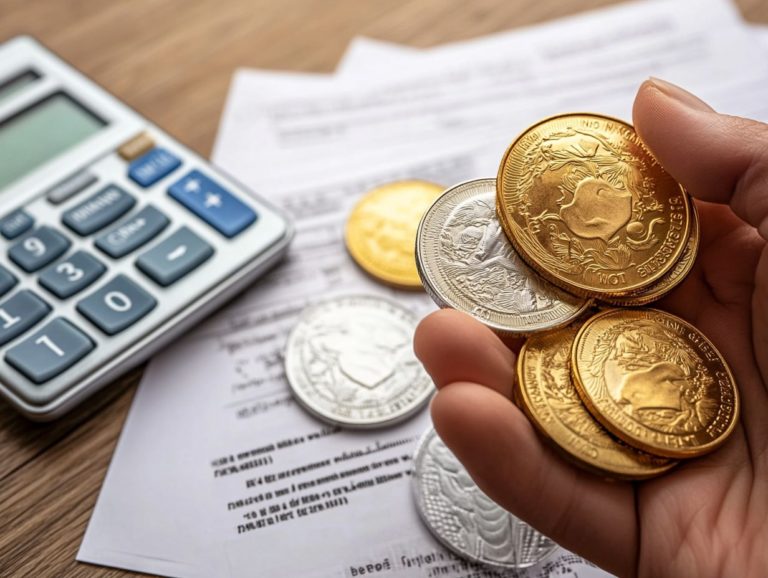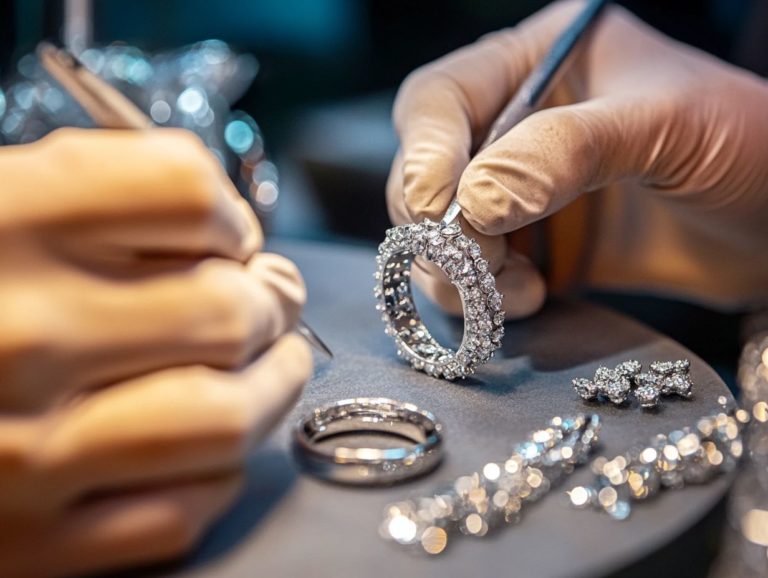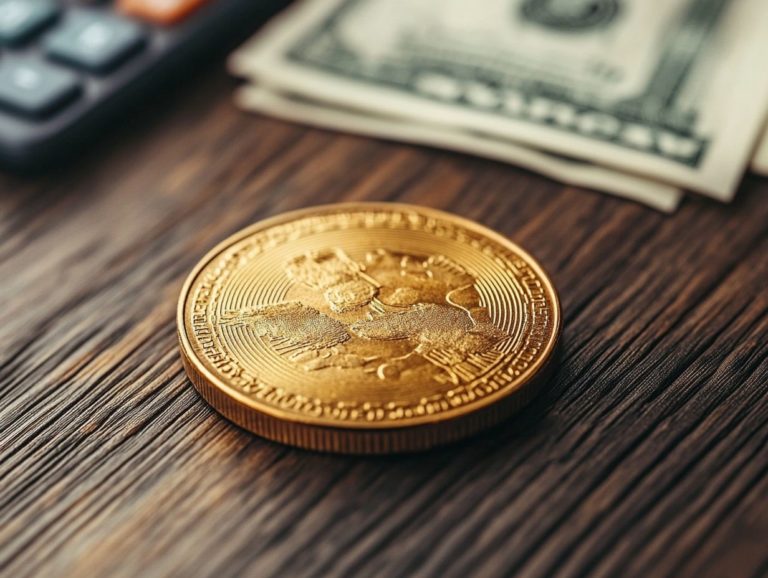Can I Invest in Palladium?
Palladium, a precious metal with distinct properties, has undoubtedly piqued your interest as you seek diversification within your investment portfolio.
As industries become ever more dependent on this versatile metal, grasping the details of investing in palladium is essential for your financial success. This article delves into why palladium stands out as an attractive investment option, examines the factors that sway its prices, and outlines the various methods available for investing.
Carefully weigh the pros and cons to determine if palladium aligns with your financial aspirations. Dive into this exciting journey to discover the potential rewards and risks of investing in palladium!
Contents
Key Takeaways:
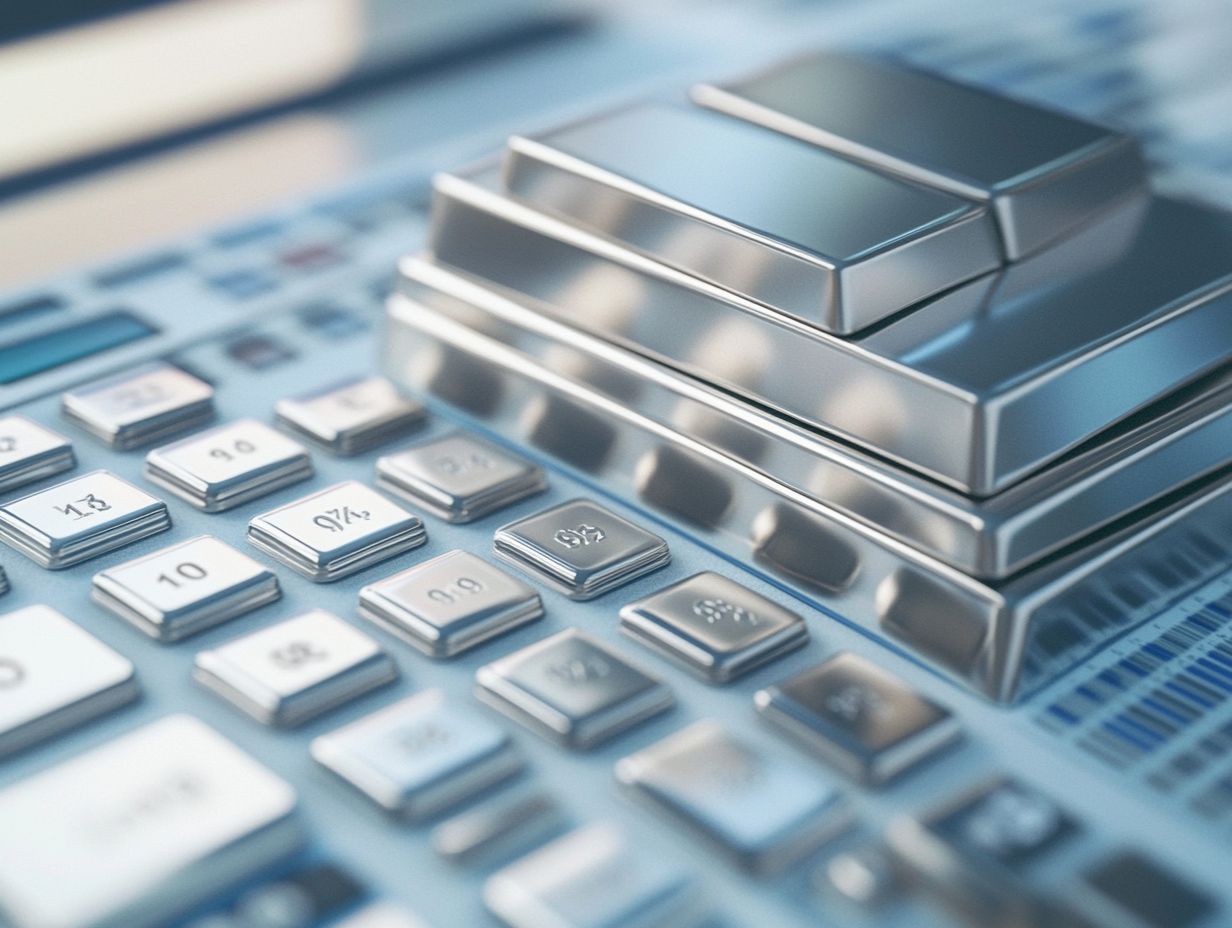
- Palladium is a rare, lustrous metal used in various industries and can be a good investment option.
- Factors such as supply and demand, economic conditions, and other global factors can affect the price of palladium.
- Investing in palladium can be done through various methods, but it is important to carefully consider risks and market conditions before making a decision.
What is Palladium?
Palladium is a precious metal from the platinum group. It is mainly used in catalytic converters, which are devices that help reduce harmful emissions from cars, playing a vital role in significantly reducing harmful emissions.
This rare metal is predominantly sourced from regions like Canada, Russia, and South Africa, where mining operations diligently extract it from the earth.
You may find palladium increasingly appealing as an investment option, thanks to its diverse industrial applications and growing demand in sectors such as electronics and jewelry.
Its role in the automotive industry is crucial for meeting stringent emissions regulations. Palladium’s remarkable conductivity also makes it invaluable in electronic devices, while its lustrous sheen elevates the aesthetics of jewelry.
Historically, this metal has been revered not only for its utility but also for its scarcity, positioning it as one of the most sought-after precious metals worldwide. The geographical significance of its production in countries like Canada, Russia, and South Africa further highlights its global importance, as these nations dominate palladium supply, influencing both industrial practices and investment trends.
Why Invest in Palladium?
Investing in palladium presents a distinctive opportunity for you to diversify your portfolio. Its notable price movements and market trends set it apart from traditional precious metals like gold.
As an investment option, palladium has demonstrated impressive resilience amidst price volatility, making it particularly attractive for those looking to leverage its demand in the industrial sector.
Palladium ETFs are now available, making it easy for you to invest in this commodity and enhance your investment strategy with confidence.
Benefits of Investing in Palladium
Investing in palladium presents a wealth of benefits, primarily stemming from its unique industrial applications and an encouraging outlook for gold, which positions it as a noteworthy asset within the precious metals market. You can capitalize on palladium’s substantial role in catalytic converters and various high-tech applications, factors that bolster its demand and price resilience, even amid market fluctuations.
This demand is further heightened by global movements toward stricter emissions regulations, which have spurred increased production needs in the automotive sector. As industries actively seek alternatives to traditional metals, palladium’s distinctive properties usher in innovative uses that enhance its investment allure.
The diversification it offers, especially when compared to more conventional assets like gold, is crucial for effective portfolio management particularly given its potential for price appreciation driven by supply constraints. Over time, these elements not only resonate with broader market trends but also construct a compelling argument for palladium, giving you the power to achieve specific financial objectives while deftly navigating market complexities.
Factors Affecting Palladium Prices
Palladium prices are influenced by a complex interplay of factors, centered around the delicate balance of supply and demand that ultimately determines its market value.
The diverse industrial applications of palladium, especially its key role in automotive catalysts devices that reduce harmful emissions in cars coupled with mining outputs from key producers such as Canada, Russia, and South Africa, are instrumental in shaping market trends and driving price fluctuations.
Supply and Demand
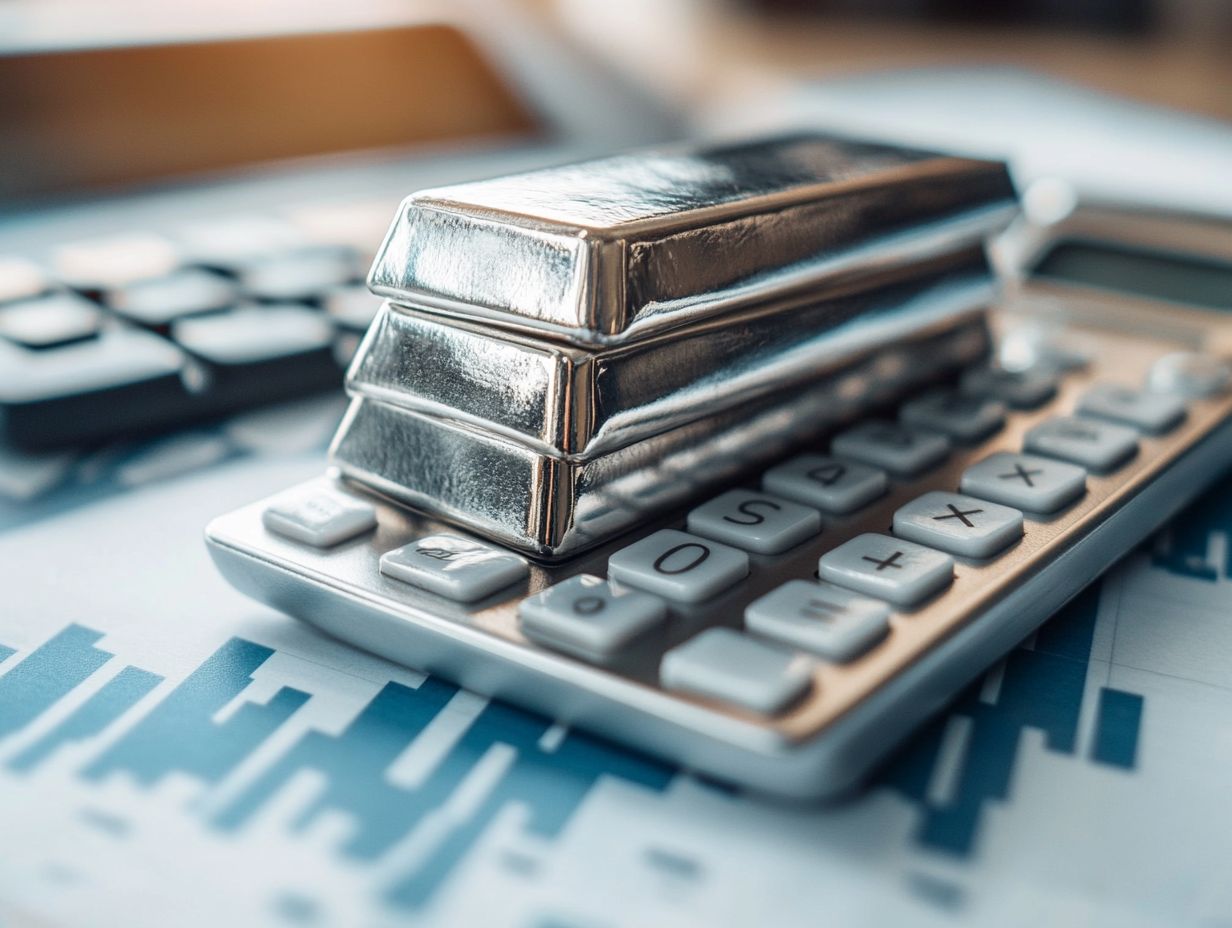
Understanding the supply and demand dynamics in the palladium market is essential for grasping its price movements. Industrial applications, particularly in catalytic converters, are significant drivers of demand.
As automotive regulations tighten globally, reliance on palladium for cleaner emissions has surged. This has intensified competition among manufacturers and investors alike.
This rising demand is complicated by limited mining yields, especially from key producing nations like Russia and South Africa, where operational challenges and geopolitical risks loom large. Disruptions in these areas can have a pronounced impact on market behavior, leading to sharp price fluctuations.
The automotive sector’s pivot toward electric vehicles could reshape investment strategies. As manufacturers actively seek alternative solutions, it’s crucial to keep a close eye on these trends, considering both short-term risks and long-term opportunities in the palladium market.
Understanding these factors is crucial for anyone looking to navigate this volatile investment landscape effectively.
Industrial and Economic Factors
Industrial and economic factors play a crucial role in shaping palladium prices, with applications across various sectors especially automotive and electronics closely tied to economic performance and regulatory changes.
When economic growth is strong, technological advancements emerge, and industrial practices shift. This leads to rising demand for palladium, resulting in price volatility and market stability.
External economic influences like changing trade regulations and tariffs add complexity to the palladium landscape. For instance, when nations impose restrictive measures, it can disrupt supply chains and cause fluctuations in availability, driving prices higher.
Additionally, advancements in fuel cell technology and increased investment in electric vehicles have sparked greater interest in palladium, especially as manufacturers strive to meet stricter emissions standards.
As demand intensifies and new applications surface, it’s vital to consider these evolving dynamics to make informed decisions regarding palladium investments.
How to Invest in Palladium
Investing in palladium presents a range of methods tailored to your unique investment goals and risk tolerances. You can consider acquiring physical palladium bars and coins or opting for palladium ETFs, which offer a more accessible entry point into this precious metal.
By understanding the diverse investment options at your disposal, you can strategically position yourself in the ever-evolving palladium market.
Methods of Investing in Palladium
You have several methods for investing in palladium. Whether you choose to purchase physical assets like palladium bars and coins or opt for palladium ETFs, each approach has its own advantages, risks, and liquidity factors that you need to grasp fully before committing your capital.
When you go the route of physical palladium, keep in mind the challenges of storage and security. Safeguarding these tangible assets requires a secure environment and may also entail additional insurance costs.
Palladium ETFs provide an attractive solution for those seeking ease of access to the market. They often come with lower transaction fees and enhanced flexibility for trading on stock exchanges. While ETFs spare you the headaches of physical storage, they may have management fees and might not track the underlying asset’s market price as closely as you’d like.
Understanding these nuances is essential for anyone aiming to navigate the complexities of palladium investment effectively. Don’t miss out on this pivotal shift in the market! Actively explore palladium investment opportunities today!
Important Considerations
Before investing in palladium, consider its price volatility and market trends. Your willingness for risk will help you decide if palladium works for you.
Understanding the supply and demand for precious metals is crucial. Market changes, especially in the automotive industry, can greatly affect palladium prices.
Aligning your investment choices with broader financial objectives creates a more cohesive portfolio. Consider incorporating ways to spread out investments, which can help you hedge against downturns and enhance long-term returns.
By meticulously weighing these considerations, you’ll be ready to navigate the complexities of investing in palladium while effectively mitigating risks.
Is Palladium a Good Investment?
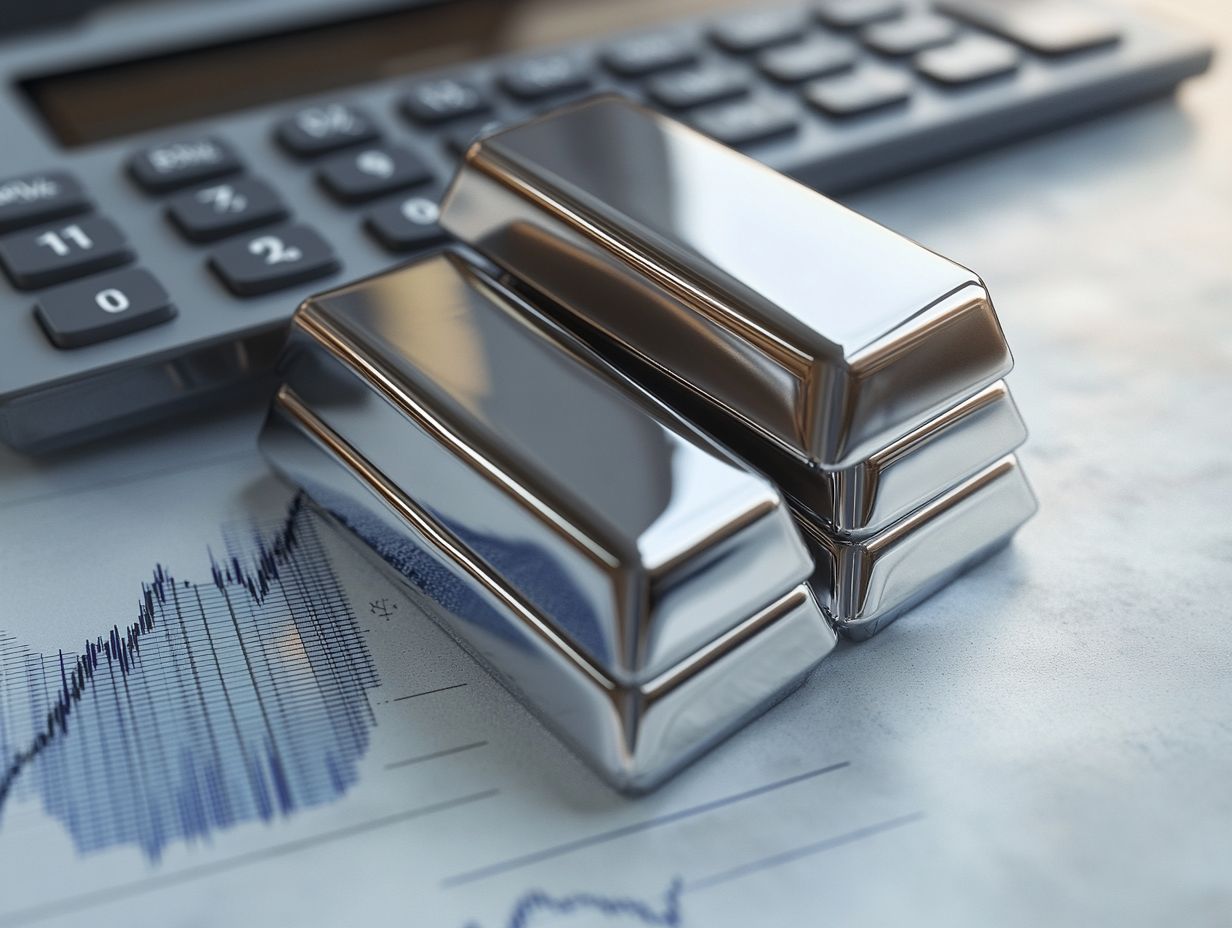
Determining whether palladium is a worthy investment involves careful consideration of its historical performance and current market trends, as well as your investment strategies.
While palladium has shown impressive growth potential, it’s essential to weigh its benefits against the risks tied to the ever-changing dynamics of supply and demand.
Pros and Cons of Investing in Palladium
Investing in palladium has advantages and disadvantages that you need to consider thoroughly. On one hand, the metal boasts robust industrial applications and the potential for price appreciation, leading to significant returns. On the other hand, its price volatility and reliance on market trends can introduce risks that you should be aware of.
The increasing demand for palladium, largely due to its essential role in automotive catalytic converters for reducing emissions, underscores its importance in the green energy transition. In 2020, for example, palladium prices skyrocketed to record highs, highlighting its scarcity. As a potential investor, be cautious of its historical price fluctuations; swings of over 100% in a single year are not uncommon.
Stay informed! Market conditions can change quickly due to geopolitical events or new regulations. Adapting to these changes will help you manage your investments.
Final Thoughts and Recommendations
Your choice to invest in palladium should be based on thorough market analysis and your personal goals. Keep an eye on global economic signals like inflation and industrial demand, as they can shift prices significantly.
Diversifying your portfolio by including palladium can help mitigate risk while enhancing potential returns, especially in fluctuating market conditions.
Consider utilizing financial instruments like ETFs or futures contracts to gain exposure without the complications of direct ownership. Ultimately, crafting a well-structured investment strategy that incorporates these insights will enable you to navigate the intricacies of the palladium market more effectively and capitalize on potential opportunities as they arise!
Frequently Asked Questions
Can I Invest in Palladium?
Yes, you can invest in palladium. It is a precious metal that is traded on various exchanges and can be bought and sold like other commodities.
What is Palladium?
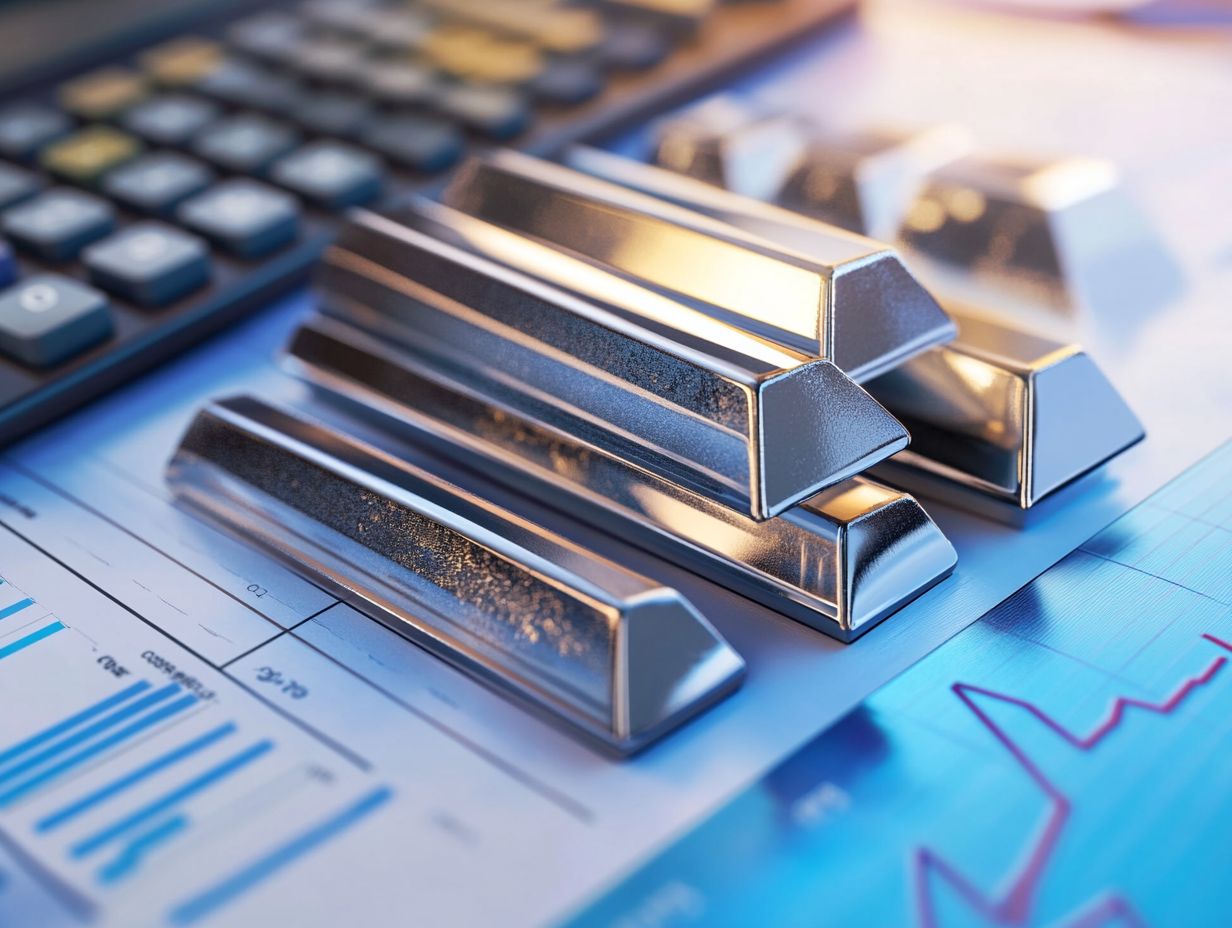
Palladium is a rare and valuable precious metal that is part of the platinum family. It’s commonly used in catalytic converters, jewelry, and electronics, making it an essential resource.
Why Invest in Palladium?
Palladium is a hot commodity with varied uses. Investors often choose it to diversify their portfolios and profit from market changes.
How to Invest in Palladium
You can invest in Palladium by buying physical bullion or stocks. Another option is trading Palladium futures contracts or ETFs, which are investment funds traded on stock exchanges.
Is Investing in Palladium Risky?
Every investment carries risk. However, Palladium has shown steady growth, making it more stable compared to many other commodities.
Downsides of Investing in Palladium
Palladium can be volatile, which means prices might change quickly. Unexpected events or market shifts can also impact its value.










